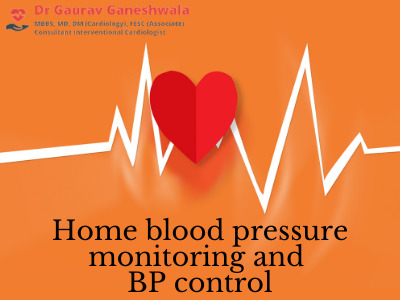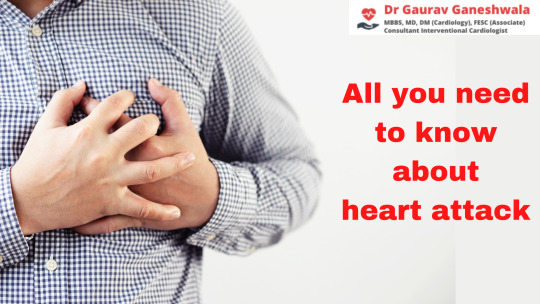Text
Home blood pressure monitoring and BP control-1

In a healthy person, blood pressure rises and falls throughout the day. But pressure higher than normal for a long time can damage health and cause health problems. In India, hypertension is poorly controlled and many hypertensive patients are living with a disability or affected with cardiovascular disease.
Current data suggest that efforts are needed to support self-monitoring in hypertensive patients because it plays important role in the management of hypertension along with medical therapy.
Why self-monitoring at home is needed?
Hypertension for a longer period can damage the heart, kidney, and brain. Patients with high blood pressure are at higher risk of complications like heart attack, heart failure, stroke, kidney failure, and many others. Hence to avoid these complications regular BP monitoring is very important. Some of the hypertensive patients check their blood pressure by visiting doctors. But, it is not always possible for patients to visit doctors and check-up their blood pressure. Hence, most often we advise patients to self-monitoring of their BP levels.
How self-monitoring can be done at home?
Firstly, understand the correct way to take a blood pressure reading. It can be done by using home blood pressure monitoring (HBPM) devices, typically known as sphygmomanometers. It records blood pressure across different points in a time outside of a clinical or community setting, mainly at home.
A blood pressure reading involves two numbers as 120/80 mmHg for a normal healthy person:
(1) The top number 120 indicates systolic blood pressure; it is the pressure in the blood vessels when the heart beats.
(2) The bottom number 80 represents diastolic pressure; it is the pressure in the blood vessels when the heart rests between the beats.
The blood pressure level for a hypertensive person is 140/90 mmHg. If a person has greater BP than this, then he/she might be at risk of developing heart diseases. Blood pressure varies during the day: it is highest after waking for short time and lowest at night. Therefore, when comparing results, it is important to compare readings that were taken at the same time of day.
Benefits of self-monitoring
Self-monitoring helps a person to measure BP at different times throughout the day and over a longer period. It also assists a doctor to get a more complete picture of a person’s blood pressure readings at different times. It can better predict cardiovascular morbidity and mortality rather than single, routine blood pressure measures that occur during a clinical visit. Let me brief some more benefits of home blood pressure monitoring.
Avoiding false diagnosis
Ø Research involving 24-hour ambulatory blood pressure monitoring indicates that most people experience two peaks in their blood pressure each day, typically between 6 and 8 AM and later between 5 and 8 PM.
Ø Blood pressure is typically elevated by 30 to 50 mmHg during these peak periods.
Ø Some patients with early hypertension may only experience higher blood pressure during one of the peak periods.
Ø Because these peak periods fall outside of normal schedules of doctor’s appointment times, could go without a diagnosis.
Ø Thus, self-testing provides the opportunity to measure BP during these peak periods and helps the doctor identify early-onset hypertension.
Identifying white coat hypertension
Ø Some of the individuals experience higher BP, when in a medical setting due to the stress of being in the doctor’s clinic or hospital.
Ø Self-testing is an effective way to rule out such type of situational high blood pressure known as “white coat hypertension”.
Ø At-home testing helps to identify the situational elevation in BP, and also helps to track daily blood pressure readings.
Monitoring treatment outcomes
Many individuals experience various symptoms when dealing with hypertension. Regular monitoring at home practically helps to create a baseline for such symptoms and provides valuable information regarding treatment outcomes which help doctors in drug and dosage adjustment.
Observing complications and emergency treatment
Home-based monitoring can also help in detecting complications and delivering needed emergency treatment. Individuals with hypertension may suffer from different complications, including diabetes, heart disease, hyperlipidemia, kidney disease, hyperthyroidism, etc. If the hypertensive patient is present with such other complications, then strict BP control is required. For example, If a person has general hypertension, then needs to regulate blood pressure at 140/90mmHg; however, if the hypertensive person also has diabetes or kidney disease, then needs to control at 130/80mmHg levels.
#heart disease treatment in pune#Best Cardiologist in Pune#Heart Clinic in Pune#Heart Specialist In Pune#Angioplasty Surgery In Pune
0 notes
Text
All you need to know about Heart Attack

What is a heart attack?
An acute heart attack is a life-threatening condition. It happens due to sudden and total occlusion of a preexisting partial block in the coronary artery, thereby totally cutting off the blood supply of a part of the heart muscle. The patient presents with sudden onset of chest pain.
Which patients are more inclined to a heart attack?
There are certain individuals with a higher risk of a heart attack. Patients with diabetes mellitus, hypertension, and disturbed cholesterol level have a three times higher risk of heart attack compared to those not having these diseases. Similarly, smokers also have three times more risk of heart attack than nonsmokers. The risk in smokers depends on the number of cigarettes he or she consumes. If your parents or siblings had a heart attack at an early age, you are more prone to a heart attack. Nowadays increased stress levels due to rapid urbanization and changing lifestyles (lack of a healthy diet and daily exercise) also contribute significantly to the rising rates of heart attack. Lastly, our heredity also plays a significant role.
What is the reason for the increasing rates of heart attacks at a young age?
Increased consumption of tobacco in any form like smoking pan mava, gutkha, mishri, lack of exercise, diet containing high saturated fats, and high stress among youngsters are common causes for increasing rates of a heart attack in the younger age group.
Can we prevent a heart attack?
Yes. The risk of heart attack can be reduced to some extent by regular exercise and the following of a healthy heart diet recommended by your cardiologist.
What are the symptoms of a heart attack?
Any kind of chest pain like chest discomfort, uneasiness, heaviness, cramping around the chest, feeling of impending doom could be the symptoms of a heart attack. Some patients may show discomfort in the arm, neck, or jaw, shortness of breath, nausea, lightheadedness, or intense weakness. Sometimes symptoms are very subtle and the patient may misdiagnose themselves like having gas or acidity. It is always advisable to consult a cardiologist if any person develops chest pain that is new in onset especially those who have risk factors.
How to behave in an emergency?
Always keep the contact number of hospitals /ambulances at home and on a cell phone.
Recognize the symptoms of heart attack
Call for help immediately
Try to reach the nearby hospital as early as possible rather than wasting time traveling to the hospital of your choice, which may be far away
Shorten the timing of decision making
0 notes
Text
Yoga: Secret to a Healthy Heart!

Tired of the same old health routine for your heart? It’s time to refresh your mind and un-dust that yoga mat! Whether you choose power, hot, or Hatha, the various benefits of this 5,000-year-old practice are endless. When most think of yoga, meditation and relaxation are the only two things that come to mind. While these are important for the health benefits they provide, it even goes beyond finding your "Solace self".
Recall all of the workout fads that came and went over the last decade, there must be hundreds, but Yoga is here to stay.
If you have a heart ailment, talk to your Cardiologist about which level of yoga may be right for you in interest to your usual therapy. And if you're a freshman or have health concerns, speak with the yoga instructor prior to class. Your instructor will offer tips and alterations so you can get the most out of the session.
Here are a few of the health benefits that yoga has to offer:
Boosts Physical Activity
Physical inactivity is a vital risk factor in developing heart disease for both men and women. Research shows that people who practice yoga are more likely to stay active and adopt healthy eating habits, which protect the heart. It is recommended to practice yoga 40 minutes, 5 days per week to inherit all the benefits.
Helps You Manage Stress
While researchers haven't concluded exactly how stress contributes to heart disease, stress can lead to an increase in behaviors and other determinants that elevate heart disease risk. These include smoking, physical inactivity, overeating, and hypertension.
Greater mind-body awareness
Yoga enthusiasts say that yoga practices decrease their stress, motivates them to exercise more regularly and, inspires them to eat healthier. These changes may reflect the strengthened mind-body awareness that yoga practitioners experience. You're more aware of the positive feelings you enjoy when you eat healthy foods and exercise regularly.
Sleep
Sometimes it is difficult to wind down after a long day and get that much-needed sleep. Invest some time in the breathing and meditation techniques of yoga to slow down your heart rate and prepare for a good night's sleep. Eight hours of sleep a night is a must for your mind and body's health.
Sure, a bowl of Oatmeal may help lower your blood pressure, but so can a warrior sequence. Studies have shown that yoga can slow down your heart rate, a great benefit to those with blood pressure issues, as well as heart diseases.
1 note
·
View note